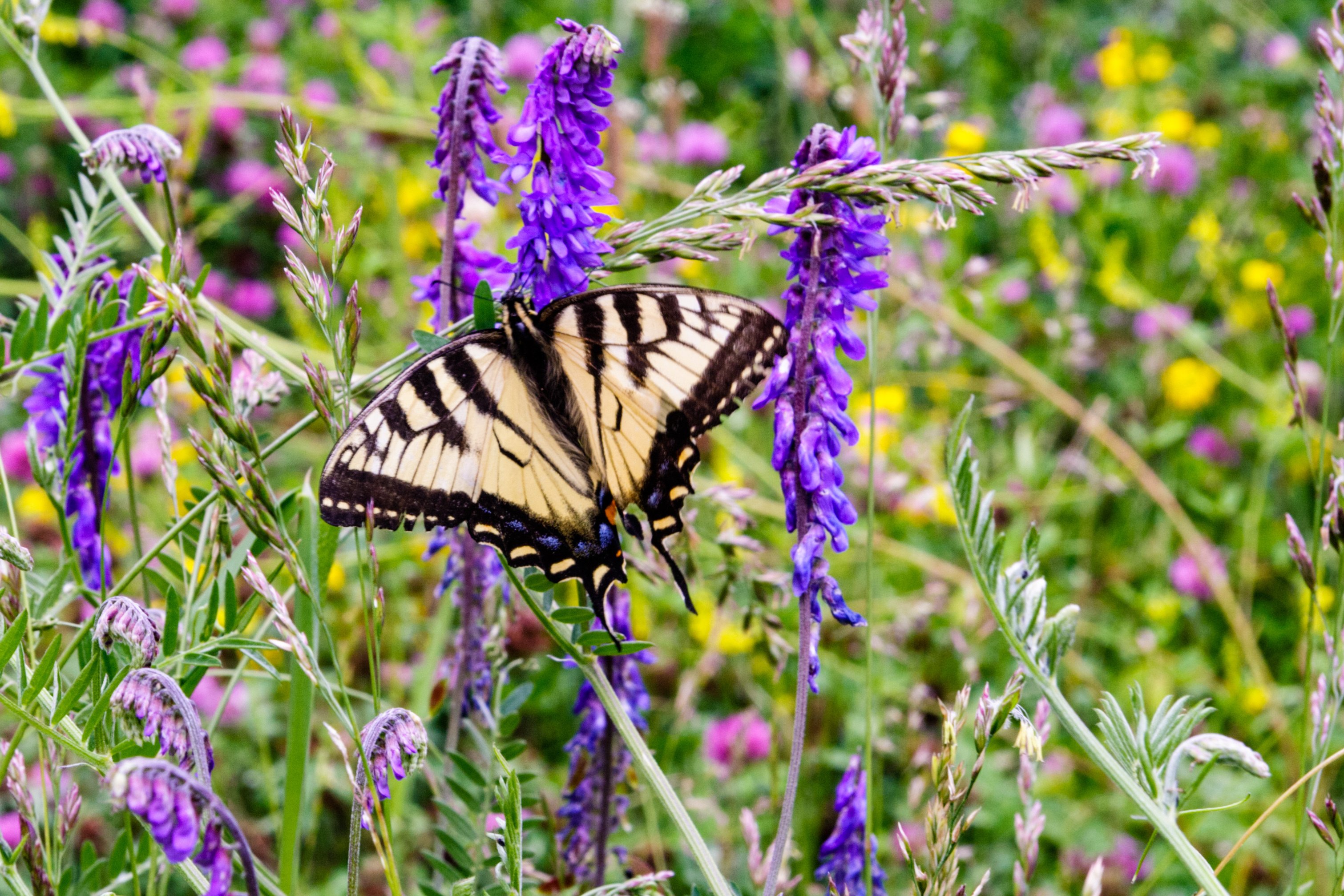Is Vetch Fetch?
Let's figure it out! Vetch sounds pretty cool, but do we even know what a vetch is? Vetches are a member of the pea family, scientifically known as Fabaceae. This family is the 3rd largest plant family with over 13,000 species. Vetch is a genus, Vicia, that contains about 140 different species with 25 of them native to the United States. Vetches are characterized by small thin leaves growing opposite to each other in pairs with curling tendrils at the end. These tendrils help the plant climb as it curls up other plants or structures. They have small pea-like flowers that turn into pea pods after blooming. Milk-Vetches are also within the pea family but a different genus, Astragalus, but will have a similar appearance. Milk-Vetches are known to grow in generally inhospitable environments and tend to be poisonous for animals due to their high levels of nitrogen.
In Colorado you will find a handful of these vetches, and most commonly you will see American Vetch, Vicia americana. American Vetch is commonly found in moist, open or partly shaded areas in the plains to montane environments. It has vibrant purple flowers that are sure to turn heads.
Now that we know what a vetch really is, we can get back to answering our question; is vetch fetch? Vetch is cool because it can be a source of edible peas, but only the purple flowered varieties. It is a really good source of protein for herbivores. Livestock, such as cows, sheep and goats, in pastures and rangeland commonly eat vetch, but they tend to eat too much of it and overeating can cause colic, gastric torsion and sometimes even death. For this reason, many ranchers don’t like to have vetch in their fields.
What can vetch be used for?
The edible parts of American Vetch are the young shoots of the plant when cooked and the seeds from the pods. There are other types of pea-like plants that are not considered edible so it is essential that you are careful in identifying the plant before foraging! Since it has obvious pea pods, vetch can be a commonly misidentified plant, and people might eat non edible varieties. So be careful when foraging for peas!
Vetch can also be used for medicinal purposes. It has antiseptic properties when mashed up into a paste and rubbed onto the body, or brewed into tea.
Not only can vetches be useful to humans, they are also helpful for other plants. It is a known nitrogen fixer, meaning it increases the nitrogen levels in soil which other plants need to grow. It also helps hold soil in place with its large root system, helping to reduce erosion. They have long taproots, up to 40 inches long, that dive deep into the soil holding the plant in and the soil together.
Vetches are also an important source of pollen for local pollinators like bees and butterflies. When an insect lands on vetch flowers, the tiny hairs on the plant dust the insect with pollen. When the insect then flies off to another plant, the pollen gets transferred to the new plant. Pollination is how these plants create new seeds and new plants.
After learning more about native vetches, I think that even the Mean Girls would agree that vetch is pretty fetch. Consider this and other members of the pea family for a beautiful pollinator garden in your own yard.

Swallowtail butterfly on American Vetch (Vicia americana).
Liv Irelan was a Naturalist (2021-2022) with Walking Mountains Science Center. Catch her on the trails drawing newly blooming wildflowers! Stop by the Vail Nature Center for a wildflower walk to see vetches in action.









